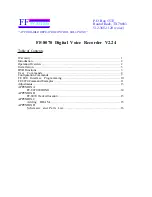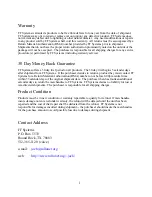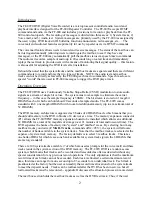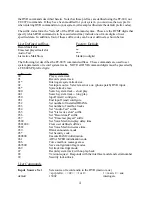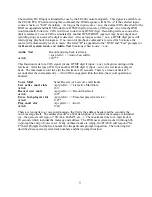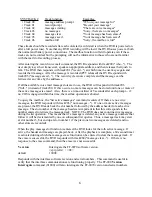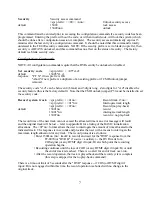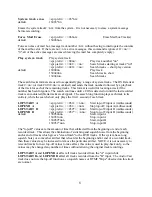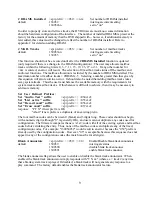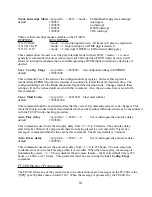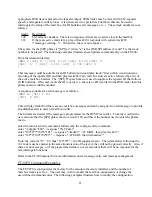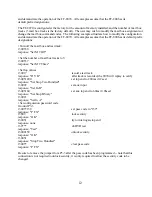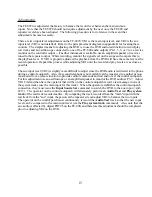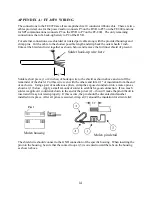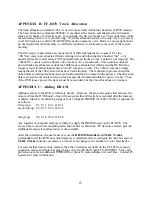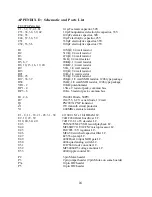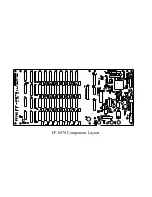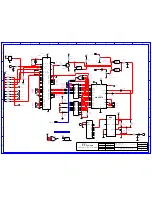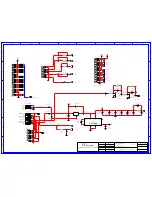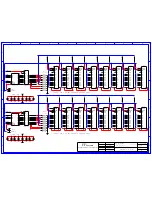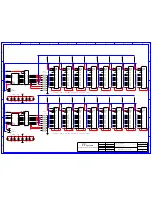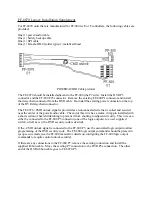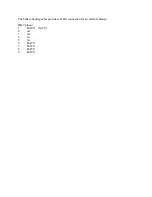
8
System track erase
<spi prefix> + <03*nn>
default
13003*nn
Erases the system track# <nn> from the system. It is not necessary to erase a system message
before rerecording.
Force Mail Erase
<spi prefix> + <066nn>
Erase Mail box Track(s)
default
130066nn
Forces an erase of mail box message track number <nn> without having to interrogate the contents
of the mailbox slot. If there are not <nn> active messages, this command is ignored. If <nn> =
"0", all of the active messages are erased (leaving the mail box completely empty).
Play system track
Play system track.
<spi prefix> + <00nn>
Play track number "nn"
<spi prefix> + <041> ; <nn>
Search tracks starting at track# "nn"
<spi prefix> + <040> ; <nn>
Search tracks -- short play version
default
13000nn
Play track
130040nn
Search tracks, short
130041nn
Search tracks
The search tracks formats are used to sequentially play a range of system tracks. The DVR starts at
track# <nn> (or track# 00 if <nn> is omitted) and sends the track number followed by a playback
of the track for each of the remaining tracks. This format is useful for locating a track if the
number has been forgotten. The search continues until a COS is detected or until the last recorded
track is encountered (blank tracks are skipped). The search long function plays each track in its
entirety, while the search short only plays the first 1 second of each track.
LOPSTART A
<spi prefix> + <050> ; <nnn>
Start lop-off: input A (milliseconds)
LOPEND A
<spi prefix> + <051> ; <nnn>
Stop lop-off: input A (milliseconds)
LOPSTART B
<spi prefix> + <050*> ; <nnn>
Start lop-off: input B (milliseconds)
LOPEND B
<spi prefix> + <051*> ; <nnn>
Stop lop-off: input B (milliseconds)
default
130050nnn
Start, input A
130051nnn
Stop, input A
130050*nnn
Start, input B
130051*nnn
Stop, input B
The "lop-off" values are the amount of time that subtracted from the beginning or end of each
recorded track. This allows the elimination of switching and squelch noise from the beginning
and/or end of tracks which gives a "clean finish" to the DVR tracks. If the system has a long
squelch burst, or some other artifact that is heard at the beginning and/or end of a recorded track,
then these values may be increased to remove the particular artifact. NOTE: it is not necessary to
rerecord tracks for new lop-off values to take affect, this value is used in play-back only, so the
values may be changed any number of times without altering the original track recordings.
LOPSTART A and LOPEND A affect all tracks recorded from the "A" input while
LOPSTART B and LOPEND B affect all tracks recorded from the "B" input. The Audio Test
track does not use the lop-off functions, so squelch noises or DTMF "blips" observed on this track
are normal.
Содержание FF-8070
Страница 19: ...FF 8070 Component Layout...


